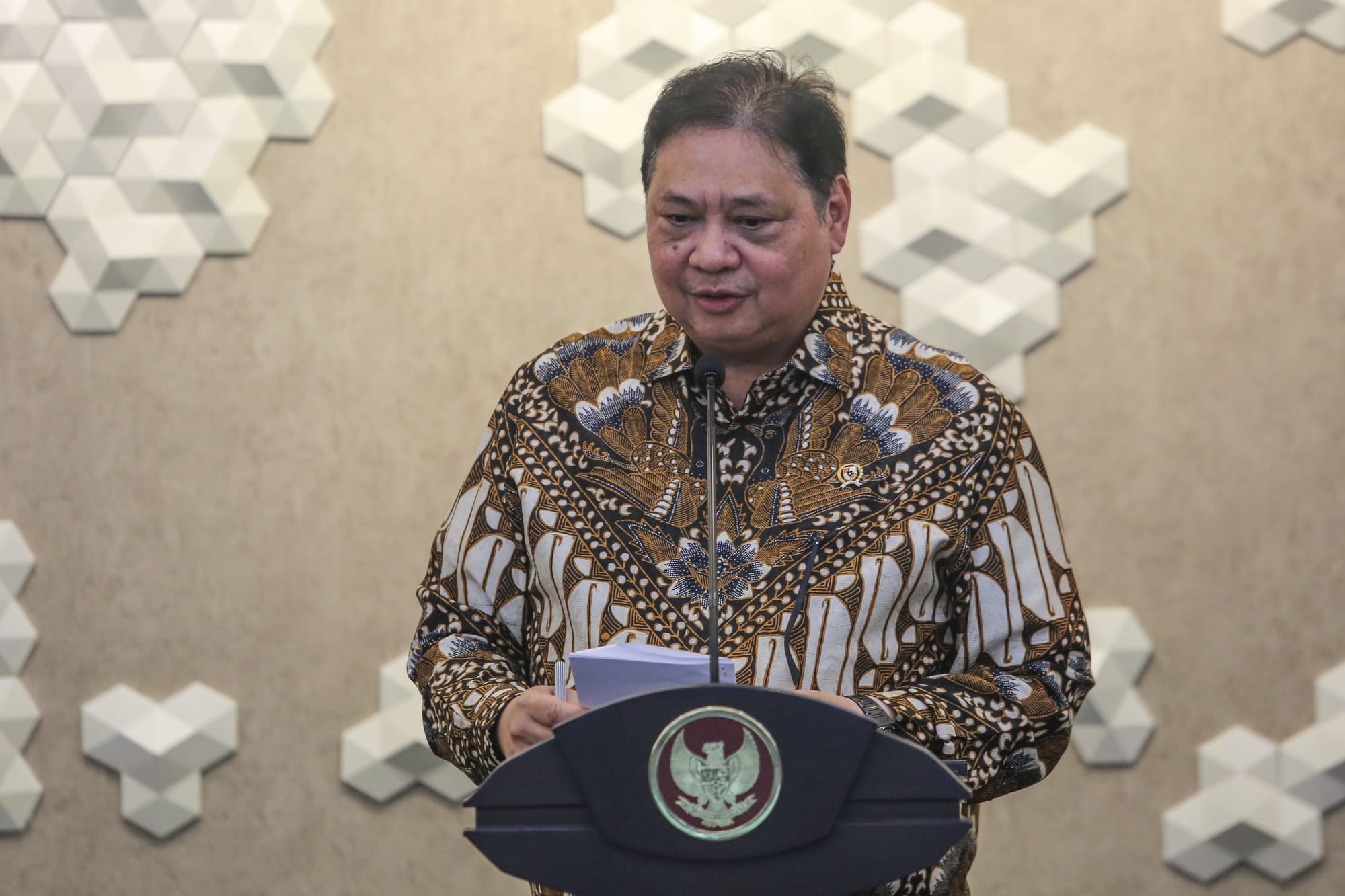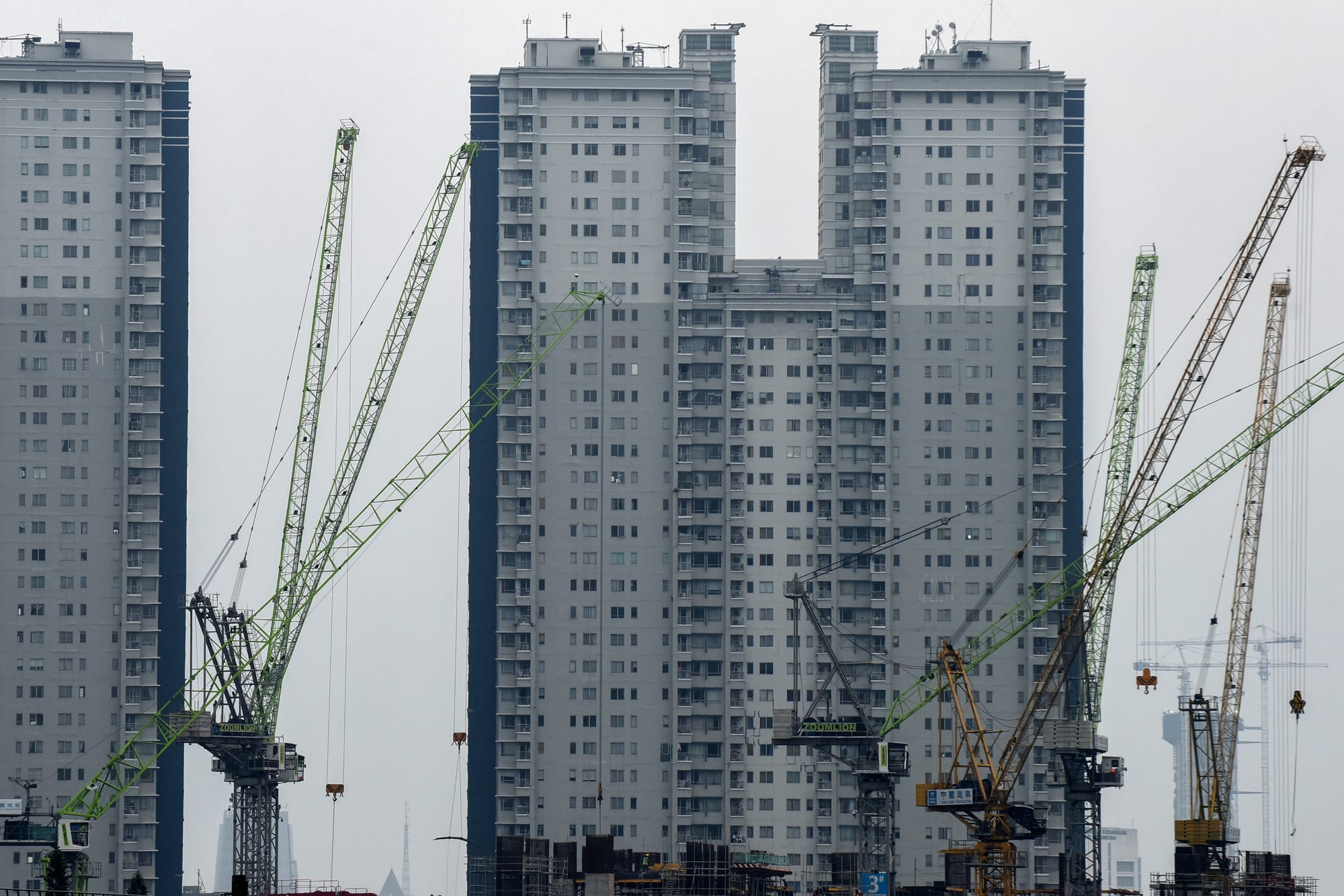In order to boost the sluggish economy and pursue a 5% growth rate, the government is preparing a number of incentives. These incentives are awaited by the business world, which needs a boost to drive the economy.
Coordinating Minister for Economic Affairs Airlangga Hartarto stated that, in order to boost the economy so that it approaches the targeted 5% growth, the government is preparing a number of incentives.
Several labor-intensive programs are a mainstay, especially in the transportation and public works sectors.
"Yes, firstly, regarding what can drive higher growth in the second semester. Well, of course, several programs such as labor-intensive programs in transportation, labor-intensive programs in public works. Then, these are also encouraged for better implementation," said Airlangga after attending the Limited Coordination Meeting at the Coordinating Ministry for Economic Affairs, Friday (26/7/2025).
In addition, the government also discussed providing discounts leading up to the Christmas and New Year period. "We hope it can be announced earlier," he added.
Property tax incentives
One of the important policies decided by the government is to maintain the Government-Borne Value Added Tax (PPNDTP) facility for house purchases up to 100% in the second semester. Previously, the stimulus amount was planned to decrease to 50%.
"So later, we will discuss the technical details," said Airlangga.
This step is considered to boost the purchasing power of the middle class and support the property sector, which is one of the drivers of economic growth. Data from the Ministry of PUPR noted that the construction and real estate sectors still grew positively by 4.5% (yoy) in Q1–2025.
Labor-intensive programs and employment
In addition to the property sector, labor-intensive programs in infrastructure – such as the construction of roads, bridges, and public transportation facilities – are also a priority. The government also requests that industrial projects such as MBG prioritize the recruitment of new workers from low-income communities (Desil 1 and Desil 2).
"We want the impact to be directly felt by the community, especially for reducing extreme poverty," said Airlangga.
The government is targeting the extreme poverty rate to fall to a range of 0%–6.5% by the end of the year. BPS previously noted that as of March 2025, the national poverty rate was at 8.47%, a slight decrease of 0.1 percentage points compared to September 2024.
Incentives and social assistance
In the same opportunity, Airlangga explained that several social assistance programs, such as Wage Subsidy Assistance (BSU), are also still being implemented. However, not all sectors receive incentives. For example, it was decided that no additional incentives would be given for electricity, in contrast to the transportation sector such as airplanes, toll roads, and especially trains, which will continue to be encouraged.
"When will it be announced? Yes, in September," said Airlangga.

Anticipating non-performing loans
However, the government still faces challenges. One of them is the high ratio of non-performing loans (NPL) in the KUR UMKM for the construction sector, which was recorded at 10%. Airlangga ensures that efforts to improve continue to be made while still encouraging the distribution of credit to UMKM according to the proper channels.
"KUR UMKM remains on track," he said.
The government hopes that this series of programs and incentives will be able to maintain the momentum of recovery and encourage stronger national economic growth until the end of the year.
Monetary stimulus
From the monetary side, Bank Indonesia (BI) is also encouraging the economy by lowering the benchmark interest rate by 25 basis points to 5.25% at the July 2025 Board of Governors Meeting.
"In addition to maintaining stability, Bank Indonesia's policies are also directed at encouraging economic growth through lowering the BI-Rate, easing liquidity, and increasing macroprudential incentives to banks to encourage credit/financing to priority sectors," said BI Governor Perry Warjiyo.
"Going forward, economic growth in the second semester of 2025 is expected to improve, and overall in 2025, it is expected to be in the range of 4.6%–5.4%," said Perry.
Read also: Cutting Interest Rates, BI Signals Encouraging Economic Growth
The business world needs incentives
Economic Policy Analysis of the Indonesian Employers' Association (Apindo) Ajib Hamdani had expressed his concerns regarding the decline in economic growth in Q1–2025 compared to the same period the previous year by 2.4%. Even though the first quarter is usually supported by the Eid consumption cycle, which increases the circulation of money. If there is no further intervention, the potential for economic growth in 2025 could even fall lower.
“Economic growth in the first quarter was quite concerning, at only around 4.87%, compared to the economic growth in the first quarter of 2024, which was 5.11%,” he said in a written statement in the press release.
APINDO explained that this weakening condition is caused by at least four factors:
A decline in public consumption due to waves of layoffs reaching more than 70,000 people in the first quarter, and an increase in poverty rates which, according to World Bank standards, puts 60.3% of Indonesia's population in the poor category in 2024.
Slow government spending patterns. First-quarter tax revenue was only 14.7% of the target, lower than the ideal 20%, which was followed by a spending efficiency program that gave a negative sentiment to the economy.
External pressures, especially the impact of Trump's tariff policy which has reduced demand for goods from the United States since April 2025 and affected the transaction balance.
Investment that is still dominant in capital-intensive sectors. As a result, the multiplier effect on employment is getting smaller: if in 2014 every IDR 1 trillion of investment was able to absorb 4,000 workers, now it is only around 1,000 workers.
In this condition, APINDO considers the importance of a short-term orientation in the second semester of 2025, especially through stimulus programs such as Direct Cash Assistance (BLT) to increase public consumption.
“The hope is that economic growth in the second quarter of 2025 can be higher, or at least maintained compared to the first quarter,” he said.
The government is also expected to optimize state spending as a main stimulus, with the principle of spending better, spending that is more targeted and has a direct impact on job creation, food security and energy.
“The government must focus on pro job creation, food and energy security. This is in line with President Parbowo Subianto's Asta Cita program, which is to increase quality employment,” he concluded.
Ajib believes that the steps that the government has prepared, such as labor-intensive programs, property stimulus, and transportation incentives, are considered in line with maintaining a minimum growth target of 5% in 2025. According to him, this is an important foundation for welcoming 2026, when the government has set a higher growth projection in the range of 5.2–5.8%, according to the 2026 Macroeconomic Framework and Fiscal Policy Principles (KEM-PPKF).
Read also: A Glimmer of Hope in the Third Quarter
Anticipating the slowdown
In contrast to the government's optimistic narrative which is still targeting growth above 5%, the latest research from the Center of Reform on Economics (CORE) research institute in the CORE Mid-Year Economic Review 2025 report published Friday (07/25/2025). CORE warns of a series of slowdown signals that need to be anticipated with real policies, not just rhetoric.
CORE projects that Indonesia's economic growth in the second quarter of 2025 will only reach the range of 4.7%–4.8%, slightly down compared to the first quarter which was recorded at 4.87%. In fact, throughout this year, the economy is predicted to remain at the level of 4.6%–4.8%, far from the government's ambition to maintain a minimum rate of 5%.
Behind that figure, there are a series of challenges that are putting pressure on the domestic economy. CORE Executive Director Mohammad Faisal highlighted that household consumption, the main engine of the economy, is weakening.
The Real Sales Index only grew 1.2%, half of the previous quarter. The Consumer Confidence Index contracted -5.1%, and the proportion of household savings shrank from 16.6% to 14.6%. The increase in the number of layoffs by 27.7% has forced many families to deplete their savings to meet basic needs.
According to Faisal, Indonesia is also burdened by external risks. The US's 19% reciprocal tariff policy is indeed referred to by the government as the result of an “exceptional struggle”, but the consequences are not small: Indonesia must fulfill a commercial commitment worth IDR 368 trillion, including the purchase of 50 Boeing aircraft. The volume of Indonesian exports to the world market is also projected to decrease by 2.65%, making our competitiveness lag behind countries such as Vietnam.
“The momentum of economic recovery now rests on the government's courage to take breakthrough steps. If the government remains business as usual, the risk of the Indonesian economy sinking deeper in the next six months is not an impossible scenario,” said Faisal.
CORE provides several policy recommendations in the short term to mediate these problems: starting from expanding stimulus for households (for example direct cash assistance and electricity tariff discounts), opening tax incentives for companies that do not carry out layoffs, accelerating strategic government spending, to strengthening commodity downstreaming and absorption of local products.
“Protecting domestic industries from the onslaught of cheap illegal imports through tightening import verification and subsidies for strategic industries such as food and beverage, petrochemicals, basic metals, to electronics,” said Faisal.


